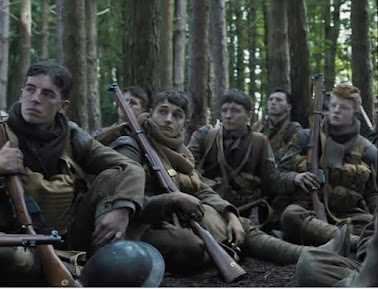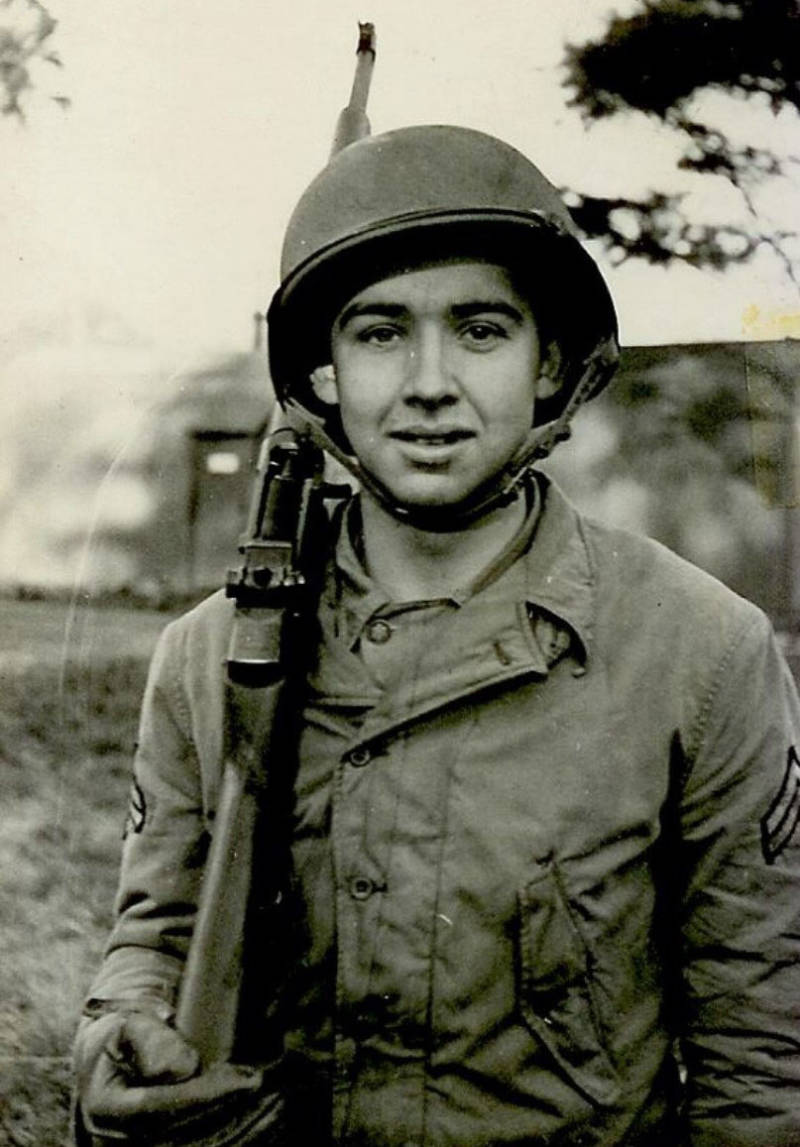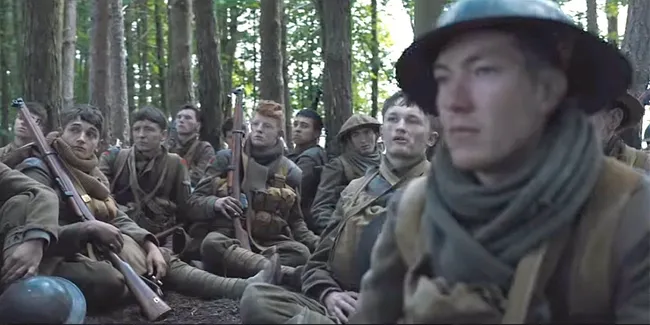The Average Combat Soldier's Age - An Uncomfortable Truth
Wars are fought by kids. We'll let that sink in for a moment. In every recorded conflict, at least from the Napoleonic Wars, when detailed records of armies began being kept en masse, to today, soldiers serving in combat have averaged around twenty-two years of age. Our brains are not fully mature until we reach twenty-five, yet nations send their young off to war, with many still in their late teens. This is an uncomfortable truth society still struggles with, and in many ways has remained oblivious to for decades, due in no small part to the film industry.
Thanks to war films, mostly from the 1950s and 60s, there has been an ongoing misconception about the age of soldiers in war. Watch any war flick prior to 2001's Black Hawk Down, and every soldier, even the low-ranking privates, are depicted as mature men in their thirties and even forties. Occasionally, you would see a young "newbie" in his late teens to early twenties, but these were always the exception. In reality, the reverse was true.
The 1962 film, The Longest Day, is one of the most famous war flicks ever made. Hailed for its accurate depictions of D-Day, it still committed an egregious error when it came to the age of its cast. Example: at thirty-two, Sean Connery was one of the youngest named actors. He and every other private soldier were depicted by actors who were similarly in their thirties or forties. We all love Sean Connery, legend that he was. But at his age, they should have cast him as a sergeant major!
In truth, the majority of British and American private soldiers were between eighteen and twenty-two. Even the NCOs trended younger. Jake Larson, a famous Tik-Tocker, who's now a hundred years old, was a corporal on D-Day at just twenty-one. Before the end of the war he rose to sergeant, placing him over a nine-man infantry squad.
The most profound age discrepancy in The Longest Day was casting John Wayne as Lieutenant Colonel Benjamin Vandervoort. At fifty-five, Wayne was more than twice the age of Vandervoort, who was twenty-seven on D-Day.
The film's popularity, along with other war films, helped perpetuate the myth that World War Two was fought by "men," while a few years later, Vietnam veterans were all stereotyped as "boys." In truth, the ages in both wars closely mirrored each other. In the U.S. Armed Forces, the average serviceman killed during World War Two was twenty-one, with the highest percentage (24%) age twenty. European armies trended slightly older, partly because they fought for much longer, but also because they were fighting for their very existence. By comparison, of the 58,220 names on the U.S. Vietnam Memorial Wall, the average age is 22.8, though 61% were under the age of twenty-one.
In the series Band of Brothers, Steven Spielberg admitted he used actors who were much older than their historical counterparts. One example: Neil McDonough, at thirty-five, depicted 1st Lieutenant Lynn "Buck" Compton (born 31 December 1921), who was twenty-three at the end of the war, and just twenty when E Company, 2/506th was stood up in 1942, when Episode One takes place. To put a few more ages into perspective, Major Richard Winters, whose character narrates the main story, was twenty-seven when the war ended. Carwood Lipton, who rose all the way to First Sergeant, the second highest enlisted rank in the U.S. Army, before being battlefield-commissioned as a 2nd Lieutenant, was twenty-five. Sergeant First Class Donald Malarkey, in charge of an entire platoon, was twenty-four on VE Day.
"Along the roadside, you'd see bodies wrapped up in mattress covers and stacked in a ditch, and those would be Americans. That could be me. I sang all the time ... I never wanted to think about it ... Death is the enemy of everyone. And even though you hate Nazis, death is more of an enemy than a German soldier."
He later stated the war is what led him into comedy. "If I couldn't make myself laugh, I'd have ended up in the madhouse."
Brooks was hardly an anomaly in terms of his age. On the memorial to RAF Bomber Command in London, unveiled by Her Majesty, the late-Queen Elizabeth II in 2012, it states the average bomber crews, including the officers, were between ages nineteen and twenty-one. The Queen herself served as an ambulance driver and mechanic in the Auxiliary Territorial Service during the war, at the age of eighteen.
And it isn't just modern wars that are fought by "kids." As mentioned above, since the Napoleonic Wars, the average age recorded of a combat soldier has remained consistent at around twenty-two, with a median between nineteen and twenty-one. One example from the Napoleonic Era comes from the British 69th South Lincolnshire Regiment. Records show that during the Battles of Quatre Bras and Waterloo (16-18 June 1815), the average age across all ranks in the regiment was twenty-one, with most having served three-and-a-half years.
It is entirely conceivable that soldiers who enlisted just prior to Wellington's British Expeditionary Force landing in Portugal, in say the 52nd Oxfordshire, 92nd Gordon Highlanders, or 95th Rifles, could have engaged in scores of battles and skirmishes, from Rolica in August 1808 to Toulouse in April 1814, surviving unimaginable horrors, becoming as hardened a veteran as one can possibly imagine, before arriving at Waterloo at the ripe old age of twenty-five.
Interestingly, while most war films until the early to mid-2000s cast actors who were too old, one that actually gets it right was the original All Quiet on the Western Front from 1930. Filmed in 1929, most of the main cast were between nineteen and twenty-two, making them believable as still being in school at the beginning of the story. Towards the very end, the main character, Paul Bäumer (masterfully portrayed by Lew Ayres), comes across as a much older, seasoned veteran when we see him interact with the newest crop of teenage recruits, even though by this time he's only around twenty-one or twenty-two. The 1930 All Quiet is also surprisingly graphic for the time, even showing the severed hands and arms of a soldier clinging to barbed wire just as he's blown apart by artillery.
In recent years, beginning with 2001's Black Hawk Down, it has become more common for war films to be both intensely graphic, with an age-appropriate cast. When Christopher Nolan was making Dunkirk, a few of the remaining veterans told him to cast a bunch of unknowns in their late teens and early twenties, which he did. A very powerful scene in Sir Sam Mendes' 2019 film, 1917, comes when Lance Corporal Schoffield finds the Devonshire Regiment, and a soldier is singing to his friends before they head to the assault trench. The camera slowly pans through the crowd, giving us about three minutes of up-close depictions. The most common reaction from audiences was, "They're all kids!" Since this takes place in April 1917, just six months after the Somme ended, I wondered how many of those same "kids" had survived one of the most horrifying events in human history, only to soon be either killed or maimed during the coming attack? The film graphically shows the aftermath, with Schoffield trying to find his late friend's brother at the casualty clearing station. I kept thinking, "And it's another eighteen months until the war finally ended!" The Battle of Passchendaele, nearly as horrific as the Somme, commenced two months later.
Incidentally, Mendes dedicated the film to his grandfather, Lance Corporal Alfred Mendes, King's Royal Rifle Corps, who at eighteen left his home in Trinidad in 1915 to join the British Army. He was awarded the Military Medal, at the time the British Empire's third highest valour award for enlisted ranks, below the Victoria Cross and Distinguished Conduct Medal.
On a personal note, when I was in Iraq with the U.S. Army (2004 - 2005), at twenty-nine, I was an "old man." Granted, I was a Staff Sergeant leading a squad, and promoted to Sergeant First Class a year later. Still, I kept recalling how I was a full decade older than my father, Donald Mace, was in Vietnam (1969 - 1970). He would go on to retire from the U.S. Air Force as a Master Sergeant.
It's not just the tragedy of the countless lives ended with painful brutality at such a young age. There is also psychological trauma amongst the survivors, even more damaging the younger we are. Despite most societies considering us adults at eighteen, according to the National Institute for Health (NIH), "Brain development is not complete until near the age of 25 years, specifically the development of the prefrontal cortex." You can read the full article here: Maturation of the Adolescent Brain I cannot fathom how my experiences would have affected me, had I been a kid of nineteen, like Dad was.









.jpg)





Comments
Post a Comment